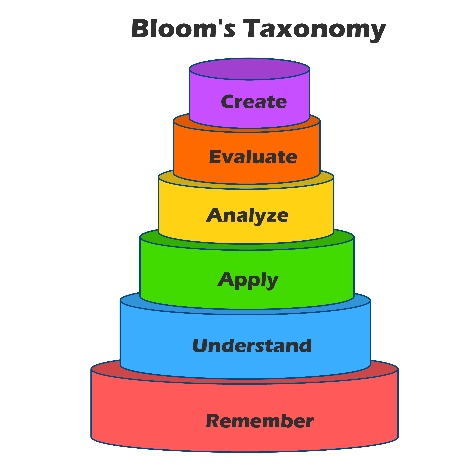Opportunities in Digital Education
The pandemic is driving a wave of innovation in digital education – the result is array of new opportunities for those taking a bold yet analytical approach
Mobius Consultants Limited, August 2021
The pandemic caused disruption to school-age education around the world on a scale not seen before. As things start to get back to normal, what will be the lasting impact? The pandemic led to a huge uptake of digital learning in a sector previously slow to adopt technology. It also underlined the essential role of teachers, destroying the myth that somehow digital learning reduces the role of teachers. Moving forward there is real opportunity for a lasting improvement in education and this is stimulating a wave of innovation and investment. To succeed, requires a bold approach coupled with careful analysis of how best to apply digital technology and learning science.
Before the pandemic
 Before the Covid-19 pandemic, it was common in education circles to hear that education has remained essentially the same for 200 years, whereas other sectors have been transformed by digital technology. Many (including Mobius Consultants) advocated a transition to a new model, sometimes called Education 4.0, in which digital techniques are used alongside teachers to personalise learning to individual students’ needs and learning style.
Before the Covid-19 pandemic, it was common in education circles to hear that education has remained essentially the same for 200 years, whereas other sectors have been transformed by digital technology. Many (including Mobius Consultants) advocated a transition to a new model, sometimes called Education 4.0, in which digital techniques are used alongside teachers to personalise learning to individual students’ needs and learning style.
To this end, there were some early successes including using artificial intelligence (AI) to improve personalisation and introducing so-called flipped classrooms where learning of new material is done digitally outside the classroom, with the classroom used instead for reinforcement and exercises. But, taking the education sector as a whole, there was considerable resistance to change and progress was slow.
Then in March 2020 the pandemic hit, and everything changed. Now that things are starting to return to normal, this paper assesses the long-term impact of these unprecedented events and identifies the resulting opportunities for innovative companies in school-age education (often called K-12 – Kindergarten to Grade 12).
The pandemic hits
 The pandemic disrupted K-12 education around the world on a scale not seen before. By April 2020, 90% of the world’s learners were locked out of classrooms and there began a huge effort to deliver education by other means. Some countries used TV channels but, in most cases, schools quickly started using digital tools more typically seen in business environments including Zoom, Teams, OneNote and YouTube. Many solutions were produced in a matter of days by individual schools and education authorities. Over a longer timeframe, some countries even developed nation-wide internet platforms such as the Madrasati system in Saudi Arabia.
The pandemic disrupted K-12 education around the world on a scale not seen before. By April 2020, 90% of the world’s learners were locked out of classrooms and there began a huge effort to deliver education by other means. Some countries used TV channels but, in most cases, schools quickly started using digital tools more typically seen in business environments including Zoom, Teams, OneNote and YouTube. Many solutions were produced in a matter of days by individual schools and education authorities. Over a longer timeframe, some countries even developed nation-wide internet platforms such as the Madrasati system in Saudi Arabia.
The OECD, the organisation operating the widely respected Programme for International Student Assessment (PISA), reports that of 188 countries affected, 83% adopted some form of digital education. The result was an uptake of technology within weeks and months that would otherwise have taken years or even decades. There was a check-point on progress around the world at the annual BETT conference in January 2021 (virtual this year) where speakers included Microsoft’s CEO Satya Nadella and Sir Anthony Seldon, one of the leading advocates for Education 4.0. Many ordinary teachers also spoke of heroic and innovative efforts to continue education digitally during the pandemic.
Big shocks have in the past have changed education for the better. For example, the widening of education access in the UK after World War 2 and major school reforms in New Orleans after Hurricane Katrina. As things start to return to normal, what will be the long-term impact of the pandemic?
The dust starts to settle
As the new school year approaches in the Northern Hemisphere, things are getting back to normal at least in more developed countries. Most schools have either already re-opened or plan to at the start of the new school year. Many countries are also providing summer schools and additional tutoring to catch-up on lost school time. As we get back to normal, two major factors emerge:
Technology uptake – First is the extent to which technology has been adopted in education. It seems highly unlikely that when normality returns, schooling will simply revert to what it was before the pandemic and everything that has been learned about technology forgotten.
Importance of teachers – The pandemic has underlined the importance of teachers in the learning process. Teachers pioneered the uptake of technology and demonstrated a capability to harness it astonishingly effectively when required to do so. The role of digital technology is to empower teachers, not replace them.
This last point is important since there was a mistaken assumption among some that digitisation in education would lead to a reduced role for teachers in the same way that staffing levels have been reduced through digitisation in other sectors. Mobius observed this in discussions with investors excited at the prospect of increasing automation through technology. Equally, some teachers reported being suspicious about technology that might one day replace them, a factor that undoubtedly slowed the adoption of technology in education.
The reality is teachers are as fundamental to education as doctors are to medicine, although in some cases the role of teachers will change in future. So, we are now in a situation where teachers have embraced technology and understand it better. And at the same time the pandemic has reinforced the value and fundamental role of teachers. Our view is this combination will at last drive the uptake of digital technology that can truly transform K-12 education. This will create many new opportunities for companies willing to drive a new approach to education.
What are the opportunities?
Moving forward, digital can address three main areas to transform K-12 education:
 Personalisation – The advantage of personalising education to the individual needs of students was first analysed by the American educational psychologist Benjamin Bloom in 1984 (Bloom also proposed a learning taxonomy still widely in use today). Several other studies have confirmed the advantages of personalisation, including an analysis in 2018 by the UK’s Education Endowment Foundation. The problem is it is difficult in the conventional school setting to personalise education since teachers have a whole class to deal with and little time for individual students. Digital technology working alongside teachers is already making real personalisation achievable.
Personalisation – The advantage of personalising education to the individual needs of students was first analysed by the American educational psychologist Benjamin Bloom in 1984 (Bloom also proposed a learning taxonomy still widely in use today). Several other studies have confirmed the advantages of personalisation, including an analysis in 2018 by the UK’s Education Endowment Foundation. The problem is it is difficult in the conventional school setting to personalise education since teachers have a whole class to deal with and little time for individual students. Digital technology working alongside teachers is already making real personalisation achievable.
Student focus – Educationalists such as Ken Robinson lament the rise of teaching systems that use rigid curricula, set simplistic standards and focus on learning how to pass exams. The result is a failure to provide the type of rounded education today’s students need, particularly in skills such as communication, reasoning, decision-making and creativity. This issue has been highlighted since many since schools have suspended examinations and, in some cases, modified curricula to cope with the pandemic. Digital technology offers the opportunity for more flexible learning and assessment.
Provision for the disadvantaged and poorly served – Around the world, there are many top quality schools such as Eton in the UK providing a good education for a small elite, with everyone else receiving a less than the ideal. This no longer meets the needs of modern economies or the expectations of their citizens. But there are insufficient good teachers and other resources to provide the type of education previously reserved for the elite to everyone. Sir Anthony Seldon’s view is that with digital learning it will be possible to provide an “Eton for everyone”. This may be an exaggeration, but the point is the correct use of technology can compensate for weak public education systems, reduce educational inequality, and deliver a reasonable education in even the poorest of countries.
A wave of innovation
 Educational technology (EdTech) was already a growing area for investment before the pandemic. This was driven by huge and fast growing expenditure on education worldwide, combined with growing awareness of the potential for digital to disrupt the sector. With the arrival of the pandemic, digital learning is now a red hot area for investment. HolonIQ reports total venture capital investment of $16bn in 2020 more than double that in 2019. And, as of mid-July 2021, there are already 28 EdTech unicorns (companies with a valuation over $1bn) valued at $84bn in total. Although impressive, this remains small compared with other sectors such as retail and financial technology, meaning there is plenty of room for further growth.
Educational technology (EdTech) was already a growing area for investment before the pandemic. This was driven by huge and fast growing expenditure on education worldwide, combined with growing awareness of the potential for digital to disrupt the sector. With the arrival of the pandemic, digital learning is now a red hot area for investment. HolonIQ reports total venture capital investment of $16bn in 2020 more than double that in 2019. And, as of mid-July 2021, there are already 28 EdTech unicorns (companies with a valuation over $1bn) valued at $84bn in total. Although impressive, this remains small compared with other sectors such as retail and financial technology, meaning there is plenty of room for further growth.
EdTech is booming around the world. For example, in April 2021 San Francisco based Outschool became the latest EdTech Unicorn valued at $1.3bn following its latest financing round. This company operates a digital marketplace for stduents and parents offering online classes to fill gaps in learning at school and to broaden knowledge. There is no pre-set curriculum – instead, classes are delivered by pre-approved teachers who decide what subjects to offer and earn 70% of the fees from their lessons. Outschool has 10,000 teachers, 900,000 learners and operates in 174 countries.
US based Chegg is an example of a more mature company. It started in 2005 as an online marketplace for second-hand textbooks and has developed to offer a range of digital learning services and content. One of its offerings is a homework help service providing stduents with worked solutions to homework exercises using a network of freelancers based in India. Valued at $12bn the company has grown fast but has attracted criticism for allowing stduents to “cheat” using the homework help feature.
In the UK, there has been a focus on EdTech solutions for schools rather than direct to students and parents. For example, Century Tech offers schools a learning platform using AI for personalisation. It supports UK and international curricula and currently offers a free summer school to catch-up on learning lost during the pandemic. Interestingly, as well as offering its platform direct to schools, Century has recently starting offering functionality as a service to other platform providers. Three levels are offered: AI based personalisation as a service, use of Century’s platform as a service and access to both platform and content as a service.
Another example in the UK is the three year old company GoStudent. As of July 2021, GoStudent is the latest EdTech unicorn and aims to become a global online school. It has several influential founder investors including Softbank and is growing at 20% month on month.
Meanwhile, the pandemic caused a wave of innovation in India with start-up investment reaching $1.4bn. Companies offer both digital education services to the local population, where uptake is booming, as well as providing development and operational resources to foreign companies such as Outschool. Byju is the largest local provider with a valuation of $15bn. It provides an online tutoring platform for Grades 4-12 and operates a freemium model with 40m total users of which 3m pay subscriptions for premium services. Byju is also launching a full digital school platform in India as well and the UK, US, Brazil and other countries.
One exception to this rapid development is in China where several companies had previously grown to provide online “cramming” services to parents wanting their children to do well in the all-important Gaokao university entrance examination. Some parents were reported to be spending more than half their income on these services and there are widespread reports of children becoming overstressed from more than 10 hours a week of cramming. Recently, the Government has intervened and seems set on limiting these excesses. In response, China’s biggest digital education companies have suffered dramatic share price reductions. For example, TAL Education, once the highest valued EdTech company in the world, has lost more than 95% of its value at the time of writing and is now worth less than $4bn. TAL Education offers an online after-school education service for K-12 including online courses, video classes and one-to-one tutoring.
As well as new entrants, larger companies realise the potential of digital learning. Major education publishers such as Pearson and McGraw-Hill recognise the decline of the traditional textbook market and have invested heavily in digital platforms although, as yet their impact is limited. Meanwhile the internet giants, especially Microsoft and Google, have a strong interest in education. This is less about creating innovative new solutions but rather driving uptake of their existing communication and collaboration tools as well as demand for cloud services.
Business models
We have identified three business models for K-12 digital learning in a post-pandemic world.
 In-school platforms – Most schools have already introduced digital technology under their own control ranging from simply using off-the-shelf tool such as Zoom and OneNote to the introduction of personalised platforms such as Century Tech operating alongside teachers. Students benefit from greater personalisation through the digital dimension than is possible with the traditional classroom alone. Teachers benefit from a reduction of time spent on tasks such as administration and marking, leaving more time to work directly with stduents. The main opportunity here is for digital tools that interwork with other school systems as well as providing personalisation and student-centered learning for stduents.
In-school platforms – Most schools have already introduced digital technology under their own control ranging from simply using off-the-shelf tool such as Zoom and OneNote to the introduction of personalised platforms such as Century Tech operating alongside teachers. Students benefit from greater personalisation through the digital dimension than is possible with the traditional classroom alone. Teachers benefit from a reduction of time spent on tasks such as administration and marking, leaving more time to work directly with stduents. The main opportunity here is for digital tools that interwork with other school systems as well as providing personalisation and student-centered learning for stduents.
Out-of-school systems – These are intended for use by stduents out-of-school. This may be to improve performance in examinations or to provide skills not well covered in conventional schools such computer coding, entrepreneurship and team working. This format may take place in partnership with schools or may be entirely independent. Using AI, such systems sometimes offer personalisation and may also provide access to real teachers by means of scheduled live classes and perhaps the opportunity for one-to-one tutorials – all of course delivered virtually. Key opportunities going forward are for systems combining the best of digital with access to real teachers. Systems supporting mobile-first operation, group-working and comprehensive integration with social media are also more likely to succeed.
Virtual schools – In countries where schools are weak or non-existent, yet another option is for virtual schools delivered digitally as a complete replacement to conventional schooling. This is most likely to apply in less developed parts of the world, in remote areas, or where students do not have access to local schools. This form of schooling is less than ideal since there is no direct contact between stduents and teachers. But the impact can be mitigated through virtual communication – for example chat, live one-to-one sessions and group working. It may also be possible to provide a network of study centres or summer schools. Making this model work is perhaps the greatest challenge for digital education. If it can be done, this could transform education for more than 1bn stduents in under-developed countries.
And finally, of course, there will be hybrids of the above models. For example, a real school operating alongside a digital after-school service, or a full virtual schooling system supported by visits to real schools during vacations for reinforcement and to develop social skills.
Finally, we note that, although this paper is focused on digital education for K-12, much of what is described is applicable to higher education and corporate training where the opportunities are at least as good as for K-12.
Our view
As we start to emerge from the pandemic, there is already a surge of innovation in digital education for K-12. The trigger for this is the forced uptake of digital by the pandemic combined greater enthusiasm from educators with the realisation that digital only makes sense when combined with real teachers. We think this is just the start of a major change as education at last starts to move on from the “factory” model used for the last 200 years to an educational experience truly designed for the 21st century.
There are opportunities for systems to work alongside schools, for after-school services and for complete virtual schools. To be successful participants in the new wave of innovation will need three things:
- To move quickly. All the evidence from social media and other digital platforms is that those who are ultimately successful move quickly to capture as large a user base as possible, often at the expense of short-term revenue
- To harness the best technology including deep learning AI techniques for personalisation, and cloud technology for speed of rollout and scalability
- To apply the latest thinking on learning neuroscience coupled with rapidly accumulating data on what actually works in learning.
Mobius Consultants is working with clients to develop digital learning businesses as well as those investing in the sector, whether new entrants or experienced market participants.
